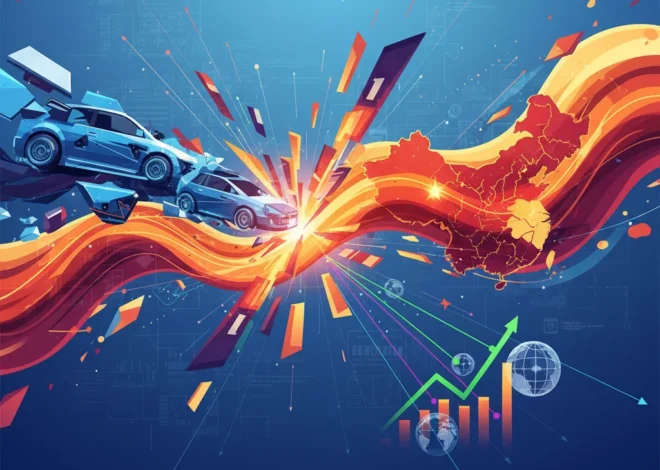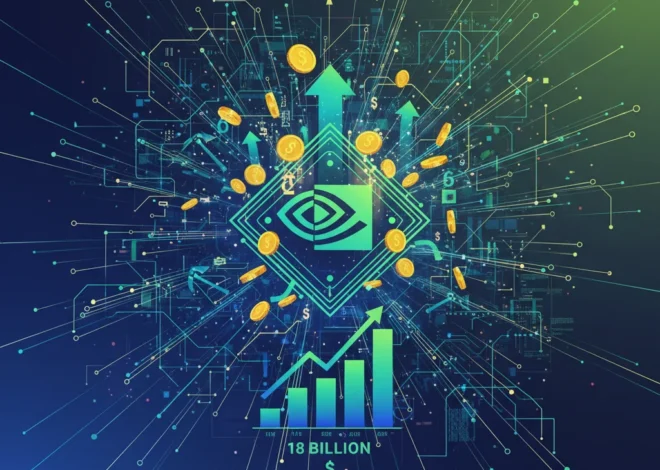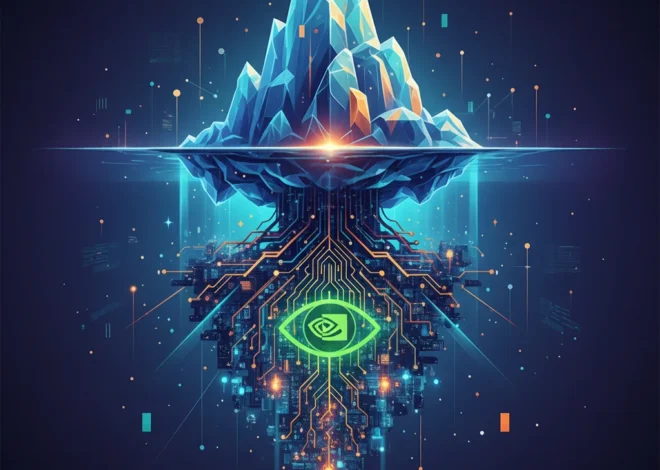
Confessions to a Chatbot: Why We’re Starting to Trust AI More Than People
Picture this: you’re sitting in a sterile, slightly-too-warm office. Across the desk, a person is about to ask you a series of deeply personal questions. It could be a job interview where you have to explain a gap in your resume, or a doctor’s appointment where you need to discuss an embarrassing symptom. You feel your pulse quicken. You’re worried about their judgment, their unconscious biases, their fleeting expression that might betray disapproval.
Now, imagine the same scenario, but the person across from you is gone. In their place is a screen with a calm, text-based interface. It’s an AI. It asks the same questions, but there’s no one to judge you. No one to impress. No one to disappoint. How do you feel now? If you feel a sense of relief, you’re not alone. A fascinating and counterintuitive shift is happening in our relationship with technology: in certain high-stakes, deeply personal situations, we are starting to prefer talking to machines.
This isn’t a sci-fi fantasy; it’s a documented phenomenon backed by emerging research and real-world applications. We’re willingly opening up to algorithms in ways we hesitate to with fellow humans. This evolution in human-computer interaction signals a profound change, touching everything from how we hire talent to how we access healthcare. So, let’s dive into the “why” behind this trend, the technology making it possible, and what it means for the future of our increasingly automated world.
The AI Confessional: The Surprising Evidence
The idea that we’d rather confide in a piece of software than a person sounds isolating, even dystopian. Yet, the data tells a different story. It’s a story about the power of non-judgment.
Consider the high-pressure world of job interviews. An Israeli startup named Tamar discovered something remarkable when they deployed an AI interviewer. They found that candidates were not only more comfortable but also significantly more honest with the machine. As reported by the Financial Times, candidates provided longer, more detailed answers, free from the stress of trying to read a human interviewer’s reactions. The fear of being judged for a past mistake or a moment of hesitation simply vanished.
This pattern extends into one of the most private areas of our lives: our health. A study from the University of Maryland found that people were more willing to disclose sensitive medical information to a chatbot than to a human doctor. When the perceived risk of embarrassment or shame was removed, patients opened up, providing a more complete and honest picture of their health concerns. This isn’t just a novelty; it has life-saving potential, as accurate information is the cornerstone of an effective diagnosis.
These aren’t isolated incidents. They represent a fundamental insight into human psychology: we crave spaces where we can be vulnerable without consequence. And it turns out, a well-designed piece of software can provide that space more effectively than another human being.
The Ghost in the Machine: How a "Failed" Console Paved the Way for Today's Tech Innovation
The Psychology of the Unjudging Judge
Why are we so willing to pour our hearts out to a machine? The answer lies in the removal of what social scientists call “social friction.” Human interaction, for all its beauty, is fraught with complexity. We’re constantly performing, managing impressions, and navigating unwritten social rules. Artificial intelligence, in its current form, short-circuits this entire process.
Here are the core psychological drivers:
- The Absence of Judgment: An AI doesn’t have personal opinions, unconscious biases, or a bad day. It won’t raise an eyebrow if you admit to being fired. It won’t subtly shift in its seat if you describe an awkward medical condition. This perceived neutrality is its greatest strength.
- Radical Consistency: Every single candidate or patient gets the exact same experience. The AI doesn’t get tired at the end of the day or favor someone who reminds it of a nephew. This creates a level playing field that is impossible to guarantee with human interaction.
- Reduced Social Pressure: There’s no need for small talk, no pressure to be charismatic, and no fear of saying the “wrong” thing. The interaction is purely transactional, focused on the efficient exchange of information. This can be liberating for introverts or anyone who finds social performance exhausting.
To illustrate the difference, let’s compare these two interaction models side-by-side:
| Interaction Factor | Human Interviewer / Doctor | AI Chatbot / Interviewer |
|---|---|---|
| Perceived Judgment | High (subject to bias, mood, first impressions) | Zero (perceived as objective and impartial) |
| Social Pressure | High (need to build rapport, be likable) | Low (focus is purely on information exchange) |
| Consistency | Variable (depends on energy, time of day, personal factors) | Perfect (every interaction is identical) |
| Data Recall | Imperfect (relies on notes and memory) | Perfect (every detail is logged accurately) |
| Emotional Empathy | Potentially High (can offer genuine comfort) | Simulated (can offer programmed empathetic responses) |
However, we must be cautious. Are we outsourcing our vulnerability to code? The “non-judgment” of an AI is an illusion; it’s a reflection of the data it was trained on. If that data contains historical biases, the AI will perpetuate them, just in a more subtle, systemic way. The danger is that we might trust the AI’s “objectivity” so much that we stop questioning its outputs. This is a critical challenge for developers and a major consideration in the field of cybersecurity and data ethics. The unjudging judge might not have a conscious bias, but it can still be programmed with a systemic one.
The Technology Powering the Conversation
This new era of human-AI interaction isn’t magic; it’s the result of decades of progress in several key technological fields. For developers, entrepreneurs, and tech professionals, understanding this stack is crucial to seeing where the opportunities lie.
At the heart of it all is machine learning, particularly the advancements in Natural Language Processing (NLP) and Large Language Models (LLMs). These are the complex algorithms that allow a machine to understand, interpret, and generate human-like text. When you interact with one of these AI systems, it’s not just matching keywords; it’s analyzing syntax, sentiment, and context to have a coherent conversation.
This powerful AI is typically delivered via the cloud as a SaaS (Software-as-a-Service) product. This model is a game-changer for startups, as it allows them to leverage world-class AI capabilities without the prohibitive cost of building the foundational models from scratch. They can build their specialized applications—like an AI interviewer or a medical intake bot—on top of platforms from major cloud providers.
This entire ecosystem is a prime example of automation moving beyond repetitive factory tasks and into the nuanced world of communication. The programming involved is less about rigid logic and more about statistical probability and data training. However, as we entrust these systems with our most sensitive data, the role of cybersecurity becomes non-negotiable. Ensuring this data is encrypted, anonymized, and protected from breaches is paramount to maintaining the very trust that makes these systems effective.
The AI Paradox: Is Your Next Job Application Just Shouting into the Void?
The Human Element: Where Machines Still Fall Short
Before we declare the dawn of our new AI confidants, it’s vital to acknowledge their profound limitations. The preference for AI is highly context-specific. While we might prefer a machine for a structured, fact-finding mission, we still overwhelmingly crave human connection for everything else.
An AI cannot replicate true empathy. It can be programmed to say, “I understand that must be difficult,” but it doesn’t *feel* it. It can’t share a knowing glance, offer a comforting touch, or draw upon a lifetime of shared human experience to provide genuine wisdom. For roles centered on mentorship, therapy, creative brainstorming, or delivering life-altering news, the human touch remains irreplaceable.
Furthermore, the risk of amplifying bias is real. An AI is only as good as the data it’s trained on. If a hiring AI is trained on decades of biased hiring decisions, it will learn to replicate those biases with ruthless efficiency, creating a seemingly “objective” system that is deeply unfair. The “ick” factor mentioned in the original FT article is often a gut reaction to this very problem—a sense that something essential is lost in translation from human to machine.
Here’s a breakdown of where each excels:
| Task Category | Best Suited for AI | Best Suited for Humans |
|---|---|---|
| Initial Data Collection | Collecting factual, structured information (symptoms, work history) | Reading between the lines, understanding context and subtext |
| Screening & Triage | Applying consistent, pre-defined rules at scale | Handling exceptions and unique, nuanced cases |
| Creative Brainstorming | Generating a vast quantity of ideas based on patterns | Synthesizing disparate ideas, true out-of-the-box thinking |
| Emotional Support | Providing 24/7 access to scripted, supportive language | Offering genuine empathy, shared experience, and compassion |
| Complex Problem Solving | Analyzing massive datasets to find correlations | Applying strategic thinking, ethical judgment, and intuition |
The Future is a Hybrid: Augmentation, Not Replacement
The rise of the AI confidant doesn’t spell the end of human interaction. Instead, it points toward a more intelligent and efficient hybrid future. The most powerful model is one where machines handle what they do best—unbiased data collection, pattern recognition, and tireless consistency—freeing up human experts to do what *they* do best.
Imagine a future where:
- A patient first interacts with an AI medical assistant, providing a complete and honest history without fear of judgment. A human doctor then reviews this perfect, detailed report and spends their entire appointment discussing treatment plans and providing empathetic care.
- A job candidate completes an initial screening with an AI that assesses core competencies fairly and consistently. The human hiring manager then spends their time with a shortlist of qualified candidates, focusing on cultural fit, creativity, and long-term potential.
This is the true promise of this technological shift: not to replace us, but to augment us, making our most human skills more valuable than ever. For entrepreneurs and developers, the opportunity is immense. The next wave of successful SaaS companies will likely be those that build seamless, ethical, and effective tools that facilitate this powerful human-AI collaboration.
Beyond the Hype: Who's Really Winning the Global AI Race?
The fact that we’re sometimes more comfortable talking to machines isn’t a sign of social decay. It’s a reflection of our deep-seated need for psychological safety and the current limitations of our own human interactions. As artificial intelligence continues its relentless march forward, the question we must ask isn’t whether we’ll talk to machines, but how we can design them to bring out the best in our own humanity. The unjudging judge is here to stay; it’s up to us to decide what role it plays in the courtroom of our lives.


